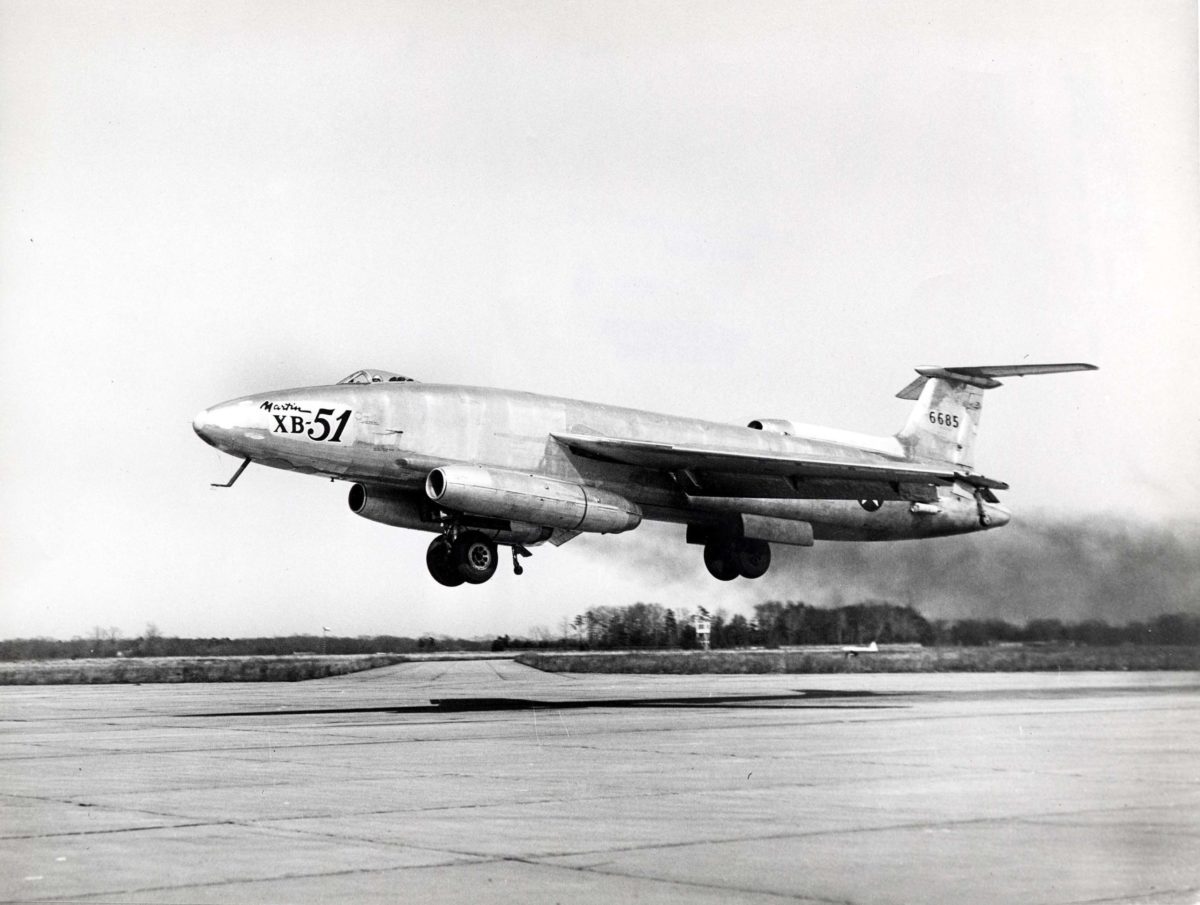A good airplane that does not go into production is bad for almost everyone concerned—the designer, the company, the public and the government. Usually the only winner when an aircraft fails is a rival constituency. Most decisions not to proceed with a design are based on a combination of technical factors that could not be overcome and political factors that cannot be denied. In such cases, it’s interesting to speculate about what might have happened had those factors not conspired to cancel the project. Following are eight of the world’s best aircraft that never went into production—what made them great, why they didn’t make the cut and what might have been different if they had.
Martin XB-51
The Martin XB-51 was arguably the most advanced attack bomber in the world on the date of its first flight, October 28, 1949. With three General Electric J47 engines, swept adjustable-incidence wings, a T-tail, a rotary bomb bay and an estimated top speed of 645 mph, the XB-51 represented a tremendous step forward. Its configuration permitted thin but sophisticated wings and ultra-clean lines, placing the two forward engines in pods—quite accidentally incorporating most of the characteristics of the area rule concept that would be promulgated three years later by Richard Whitcomb. The pilot’s cockpit was covered by a tiny bubble canopy, while the navigator/bombardier sat behind and below. Both had ejection seats.
The aircraft proved remarkably reliable during tests. Pilots enjoyed flying the XB-51 despite its unusual bicycle landing gear configuration. Interviewed individually, three of the test pilots—Martin’s O.E. Pat Tibbs, Colonel Russ Schleeh and Brig. Gen. Guy Townsend—were unanimous in their praise, calling it the best prototype they had ever flown despite some initial problems. Jet-assisted takeoffs were routine, and lateral stability problems cropped up later in testing. Dutch roll, the nemesis of swept wings at that time, was also present. Although the XB-51 was only 30 mph slower than the North American F-86 fighter, it still lost the competition for the role of ground-attack jet to the English Electric Canberra.
All the official reasons for rejecting the XB-51—shorter endurance, less adaptability to soft fields and lower load limiting factors—could have been overcome as the aircraft developed. In fact, the XB-51 was doomed from the start. Aviation pioneer Glenn Martin had sided with the U.S. Navy in the famous “Revolt of the Admirals,” and General Hoyt Vandenberg, the USAF chief of staff, vowed that the Air Force would not buy another Martin design.
Ironically, Martin was given the contract for building the U.S. version of the Canberra as the B-57. It did so, ultimately delivering more than 400 improved models of the aircraft, but only after some agonizing development problems and several fatal crashes. Had the Air Force spent the same time and money on the XB-51, it could have created a much more effective aircraft and perhaps even kept the grand old Martin firm in the airplane business.
Two XB-51s were built, both of which were lost in crashes attributed to pilot error. One enjoyed a brief moment of glory as the “Gilmore Fighter” in the film Toward the Unknown.
Avro Canada CF-105 Arrow
While the XB-51 had only a brief moment in film, the brilliant Avro Canada CF-105 Arrow had an entire movie (plus some documentary television shows) dedicated to it. Arrow starred Dan Aykroyd in a serious role and, despite the inevitable cinematic liberties taken with the story, pretty well described the situation in which pettifogging politicians destroyed a magnificent aircraft. At least that’s the conspiracy theory many prefer, for there were, as always, other factors involved.
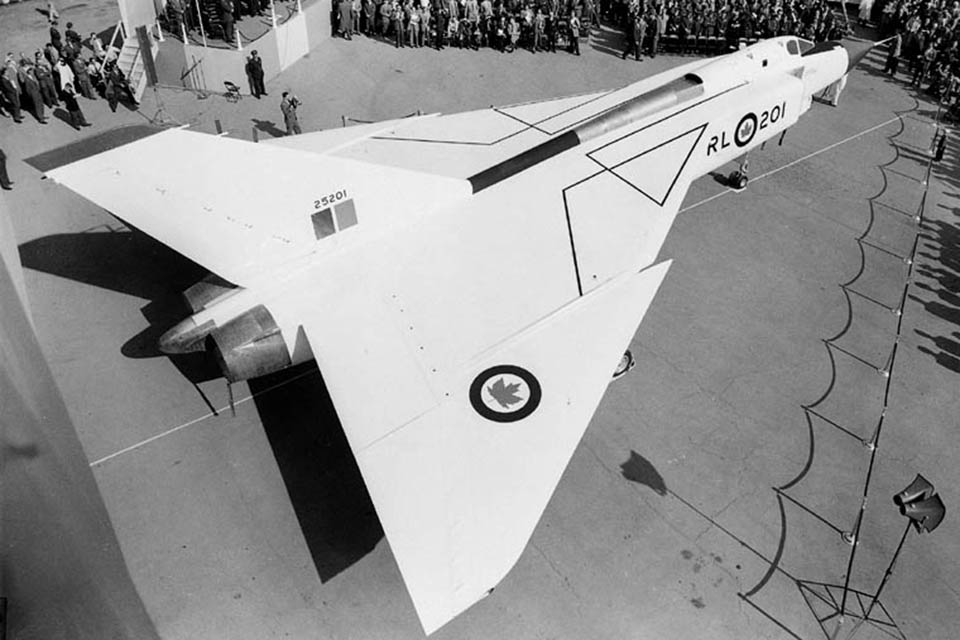
Intended to intercept Soviet bombers, the CF-105 Arrow was designed to have a speed of Mach 2, a 60,000-foot ceiling and a combat radius of 200 miles. The delta-wing two-seater was supposed to be powered by brand-new Orenda PS-13 Iroquois engines, delivering more than 26,000 pounds of thrust in afterburner. An automatic flight control system that prefigured fly-by-wire technology was installed. But a series of advanced fire control systems proved to be the design’s Achilles heel.
The first Arrow was rolled out on October 4, 1957, the day the Soviet Union set the world reeling with the launch of Sputnik. Intercontinental ballistic missiles were immediately perceived as a bigger threat than bombers, and that influenced government thinking.
A CF-105 Mk. 1, equipped with less-powerful Pratt & Whitney J75 engines, made its first flight on March 15, 1958. The test program went very well, with one Arrow reaching Mach 1.98 at less than full throttle. With costs rising and priority sinking, the Royal Canadian Air Force accelerated the program, ordering concurrent development of five Mk. 1 prototypes and the necessary tooling. Wind tunnel testing was supplemented by 11 free-flight test models mounted on Nike rocket boosters.
The Mk. 1 Arrows had made more than 60 flights and the first Mk. 2 version with the Iroquois engine was nearly ready to fly when Prime Minister John Diefenbacker canceled the CF-105 and Iroquois programs on February 20, 1959. As had happened in 1950 with the Northrop YB-49, the cancellation was followed by a draconian order to destroy all the Arrows, along with their plans, tooling and even the models.
The decision to cancel the Arrow might have made good financial sense for the Canadian government, but it was both a short- and a long-term financial disaster for the Canadian aircraft and engine industry. Avro had to lay off more than 14,000 workers.
Even more unfortunate, the incredibly advanced engineering implicit in the Arrow design was summarily sacrificed. Much of the CF-105’s leading-edge engineering could have been used in other programs, and the airplane might have garnered foreign sales. A brain drain subsequently ensued, and Avro’s best engineers quickly found employment in the United States.
Heinkel He-112B
Both politics and engineering played a role in the Luftwaffe’s decision not to adopt the Heinkel He-112 as a fighter. Willy Messerschmitt and Ernst Heinkel were bitter enemies, and their hard feelings were never more evident than in the 1935 competition between the prototypes of the Bf-109 and the He-112. The two planes reflected completely contrasting philosophies. The Bf-109 had a single-spar wing, angular lines and a narrow-track undercarriage that retracted outward. The larger, heavier and more complex He-112 featured an elliptical wing planform and outward-retracting landing gear that was nevertheless located farther out on each wing.
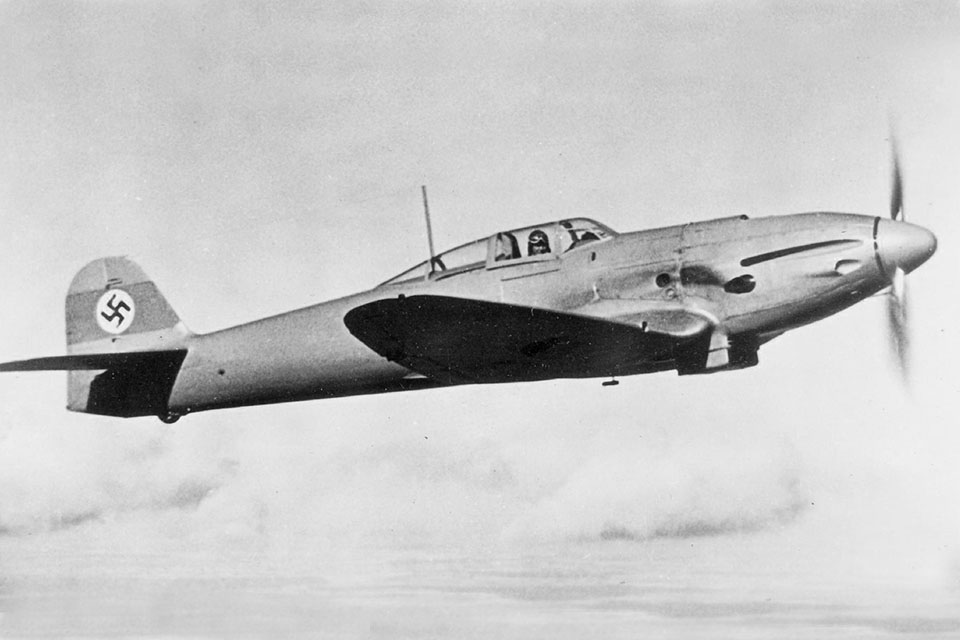
In the initial competition, the Messerschmitt proved to have better handling qualities, was slightly faster and could out-dive its opponent. The Bf-109 was selected for mass production, but Heinkel continued to improve his design. The He-112B, equipped with the same engine as the contemporary Bf-109B, achieved comparable performance and had much better visibility, always a grave deficiency in the Messerschmitt.
Striving for quantity production, Luftwaffe leaders decided to concentrate on the Messerschmitt rather than have two fighters of almost equal capability. That was an error which thousands of German pilots would eventually come to regret, for as the standard of Luftwaffe training declined, the number of takeoff and landing accidents in the narrow-track Messerschmitt increased until they reached some 10 percent of the more than 33,000 Bf- and Me-109s produced. The Heinkel’s wide-track landing gear would have cut that figure significantly.
As the He-112 evolved into an aircraft almost as pretty as the Super marine Spitfire, the Luftwaffe released it for foreign sale to Japan, Hungary and Romania, the latter of which used it with some success against Soviet opponents. Others were sent with the Condor Legion to assist General Francisco Franco in the Spanish Civil War, with some remaining in Spanish use until the end of World War II.
Ernst Heinkel went on to develop the He-100. A prototype of that aircraft set the world’s absolute speed record of 463.92 mph, and a limited 12-plane production run was subsequently used for propaganda purposes, with a flood of photos of the so-called “Heinkel He-113” released in varied markings. Germany’s disinformation efforts were so convincing that many RAF pilots claimed victories over He-113s. But just as the He-112 had been shortstopped by the Bf-109, the He-100 was halted by the promise of the Focke Wulf Fw-190, a much better fighter that also possessed a wide-track landing gear.
Lockheed AH-56A Cheyenne
Timing rather than politics was the primary reason that the extraordinary Lockheed AH-56A Cheyenne did not enter production. The Vietnam War was drawing to a close and defense budgets were being cut just as the Cheyenne’s development problems were solved. As a result, a wonderfully advanced helicopter—and the potential for Lockheed to become a real competitor in the rotary-wing industry—disappeared forever.
The Cheyenne was the product of the famous Lockheed Skunk Works, where one of the brightest but lesser-known engineers was Irving Culver, who had actually coined the term “Skunk Works.” A design genius, Culver made up for his lack of formal engineering training by creating a form of mathematics all his own. He had an intuitive ability to find simple solutions for tough problems, and led the way for Lockheed in jets, missiles and also, somewhat surprisingly, in helicopters.
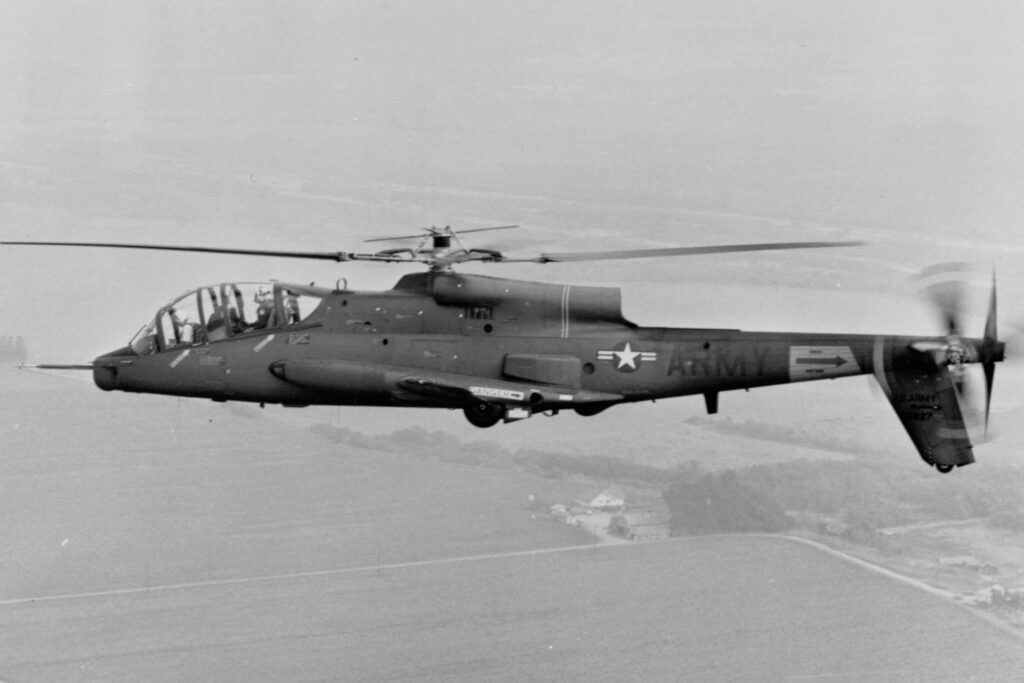
In the late 1950s, Lockheed CEO Robert Gross asked Culver to design a helicopter that civilian pilots would find easy to fly. Culver devised an innovative rigid rotor system that was successfully tested on the Lockheed CL-475. The single prototype proved much easier to fly than conventional flapping-blade choppers. The CL-475 was followed by a Navy order for a pair of XH-51A demonstrators. These routinely reached a speed of 175 mph, and one became the first helicopter to exceed 200 mph, albeit in a slight dive. NASA was so impressed that the Langley Research Center ordered an X-51N for additional testing. One of the original XH-51As was converted into the XH-51A Compound, which featured stub wings, one of which mounted a Pratt & Whitney J60 turbojet. In May 1965, the XH-51A Compound reached 272 mph, and on June 29, 1967, it clocked an unbelievable 302.6 mph.
Despite the far greater rotary-wing experience of Sikorsky, Bell and other firms, Lockheed won the Army competition for a fast, heavily armed and armored helicopter with its Model CL-840, the AH-56A Cheyenne. The Cheyenne retained Culver’s four-blade rigid rotor concept, using the stub wings to provide lift during flight, when the rotor was used only for pitch and roll control. A General Electric T64 engine powered both the rotor and a pusher propeller. The crew of two sat in tandem, with the gunner in front controlling a powerful armament system aimed via an innovative helmet-mounted sighting system that presaged similar systems just entering production at that time.
The Cheyenne first took to the air on September 21, 1967. Handling was generally excellent, and the top speed of 252 mph met Army specs. However, stability problems at low altitude and at high speed delayed development and increased costs. By 1972, Lockheed had solved the stability problems, but the delays coincided with defense budget cuts of the period, and the program was canceled.
The brilliant Lockheed engineer Willis Hawkins always maintained that the Army’s cancellation was a tremendous mistake. He estimated that the Army could have purchased 2,700 Cheyennes, with all problems solved, for the money spent developing the Hughes (later McDonnell Douglas and still later Boeing) AH-64 Apache. The Apache made its first flight on September 30, 1975, but it experienced a long and troubled development period, not entering service in quantity until 1984. Hawkins pointed out that the Cheyenne was 70 mph faster, longer ranged and more agile than the Apache— and the Army could have had production quantities delivered by 1973.
Perhaps even more important than providing the Army with a new weapon, the Cheyenne could have led to the development of new helicopters at Lockheed. That in turn might have prevented the incredible visionary shortfall by which the U.S. armed services find themselves serving all over the world with helicopters that currently range from 20 to 40 years in age.
Verville-Sperry R-3
Industrial politics and a nascent testing process prevented the U.S. Army Air Service from rocketing into an incredible lead in fighter design in 1922. McCook Field’s Engineering Division created the Verville-Sperry R-3, combining the kindly genius of Alfred Verville and the manufacturing expertise of the Lawrence Sperry Aircraft Company of Farmingdale, N.Y. At a time when the fixed-gear Thomas Morse MB-3A biplane was the standard Army pursuit plane, the Verville-Sperry R-3 cantilever monoplane boasted a streamlined fuselage, retractable landing gear and low-drag cooling system. The R-3 looked very much like an open-cockpit version of the Hawker Hurricane, which would not arrive on the scene until 13 years later.
The Army Air Service authorized purchase of three examples of the Verville-Sperry at $25,000 each, intending to install the new and powerful Curtiss D-12 engine to spin the new all-metal Curtiss Reed propeller. The design specified the use of the patented Curtiss wing radiators, which conformed to the wing surface, eliminating the need for a large drag-producing frontal radiator.
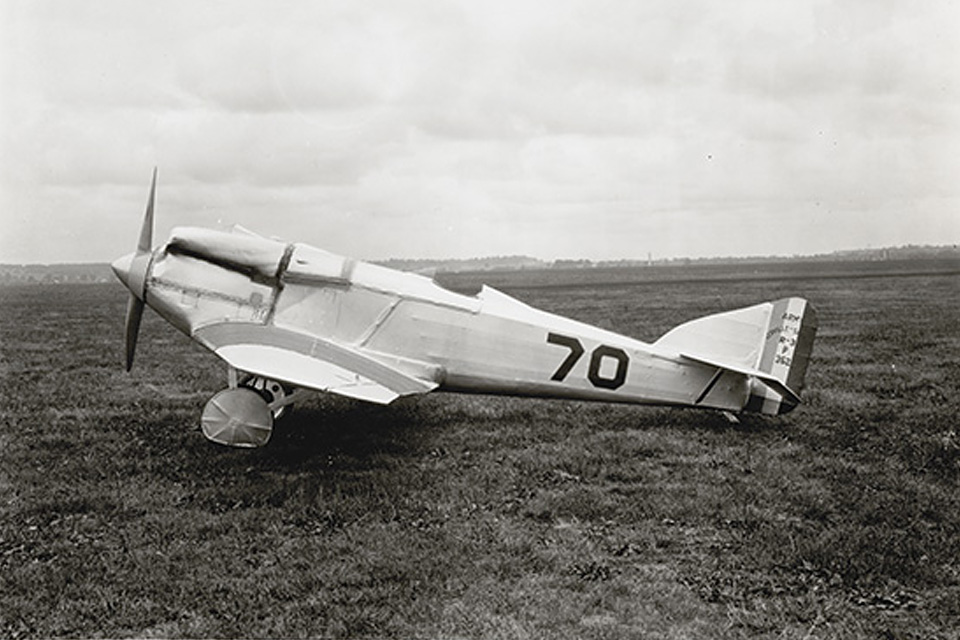
The Curtiss Aeroplane and Motor Company owned the patent and also manufactured both racing planes and fighter planes for the services. Curtiss did not want to see its bread-and-butter line of biplanes eclipsed by a maverick monoplane design from the Engineering Division. The record is vague on what political pressure was applied, but instead of the silky sweet Curtiss engine, the Verville-Sperry R-3 was saddled with the vibration-prone 300-hp Wright H-3 power plant. Drag-inducing Lamblin “lobster pot” radiators were fitted in place of the sleek wing radiators, and a conventional wooden propeller was installed.
Thus outfitted and with almost no testing, all three R-3 racers started in Detroit’s 1922 Pulitzer race. Lieutenant Russell Maughan won in the Curtiss R-6 at 205 mph, followed by three other Curtiss racers. Lieutenant Eugene Barksdale (for whom the Louisiana Air Force base is named) finished fifth, at 181 mph, in the R-3. The second R-3, flown by Lieutenant Fonda B. Johnson, finished seventh, while Captain St. Clair Street had to make a forced landing in the third R-3 when an oil line broke.
The Engineering Division was naturally discouraged with the R-3 because of the political opposition, the planes’ poor showing in the Pulitzer and some inherent design problems. The aircraft experienced incipient flutter at higher speeds, and the open wheel wells resulted in a lot of drag even after the gear was retracted. The rational course, given the significant investment in the project, would have been to conduct extensive wind tunnel tests and continue flight testing.
For the 1923 Pulitzer race, a more confident Curtiss company relaxed its pressure and allowed both a D-12 engine and the surface radiators to be used. Wheel covers were fitted and a Reed metal prop installed, giving the aircraft a top speed of 233 mph. But just before the race, an edict came down that a wooden propeller had to be used. The new prop was unbalanced, causing such a terrific vibration that pilot Lieutenant Alex Pearson quickly aborted the race.
Ironically, a much-worn R-3, flown by Lieutenant Harry Mills, won the 1924 Pulitzer at a speed of only 215.72 mph. That marked the end of the racing line for the plane, which went back to the McCook Field museum, where it was subsequently placed on display. Along with many other aircraft, the R-3 was destroyed when World War II started and additional space was needed.
If Alfred Verville had been given a year’s time and a little money, he could have turned his design into the world’s finest fighter. Sadly, he got neither, and the R-3’s configuration would not reappear until more than a decade later.
Martin-Baker MB.5
Some planes should go into production simply because they are so beautiful. The Martin-Baker MB.5 is a prime example. Considered by many the ultimate refinement of the piston-engine fighter during WWII, the MB.5 looked like a Mustang with cosmetic surgery. And the MB.5’s beauty was not just skin-deep—it had been designed from the start for ease of production and maintenance.
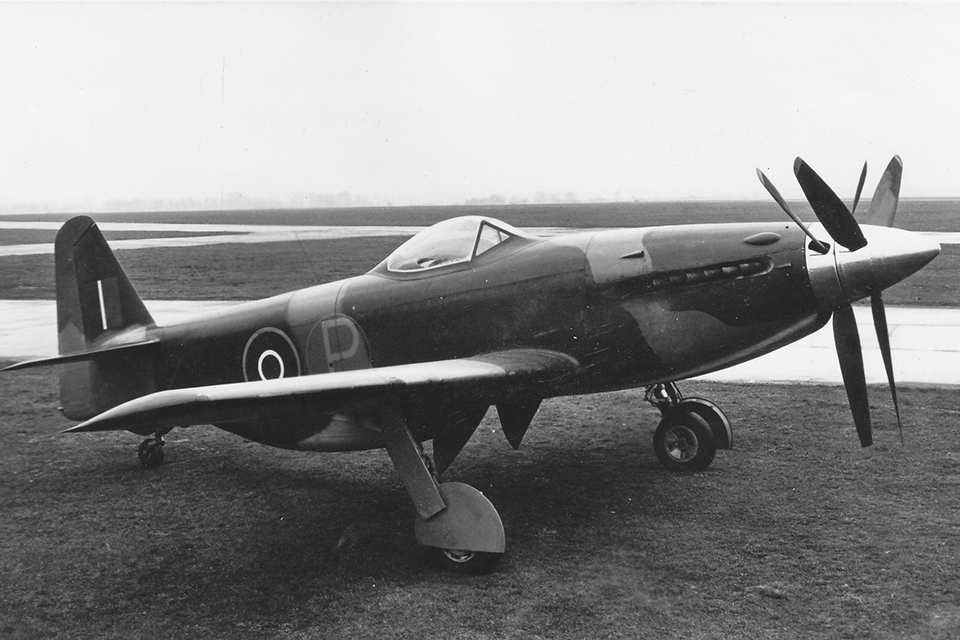
The small Martin-Baker company had built a series of aircraft that led first to the Martin-Baker MB.3, which flew for the first time on August 31, 1942, with one of the firm’s partners, Captain V.H. Baker, as pilot. Bearing a strong resemblance to the Heston-Napier racer, the MB.3 was powered by a Napier Sabre engine and had a top speed of 415 mph. The early Sabre engines were notorious for failures, and Baker lost his life when his engine quit during a landing approach. The remaining partner, James Martin, was a perfectionist, and his redesign of the aircraft emerged as the MB.5, powered by the 2,340-hp Rolls-Royce Griffon engine. The aircraft proved to be a delight, with the official report declaring, “…the MB.5 is excellent and is infinitely better—from the engineering and maintenance aspects—than any other similar type of aircraft.” Test pilots loved the plane, which topped 460 mph at 20,000 feet, and was extraordinarily maneuverable. That last attribute was publicly demonstrated at the 1946 Farnborough Air Show, where famed Polish aerobatic pilot Jan Zurakowski put it through its paces, subsequently calling it the best airplane he had ever flown.
Why, then, was it not put into production? Unfortunately, James Martin continually allowed his quest for perfection to be his own worst enemy. The first prototype MB.5 was supposed to have been delivered in January 1943. Had that happened, it almost certainly would have gone into quantity production, for its potential exceeded that of the rather tired, overstretched Spitfire Mk. 21. But Martin’s penchant for perfection delayed its delivery, and the MB.5 did not make its first flight until May 23, 1944. By the time it had completed its tests at Bascombe Down in 1946, the war was over and the jet age had arrived. The single MB.5 was relegated to first serving as a ground training device for mechanics, then as a target for gunnery practice. It was then burned—an ignominious end for a Martin-Baker aircraft.
But it was not the end for James Martin and his firm, which became a world leader in the design and manufacture of ejection seats. Martin-Baker seats have saved more than 7,000 lives, and their development certainly warranted the perfectionist’s touch that Sir James Martin provided.
British Aircraft Corporation TSR.2
The most horrendous example of a government’s interference in the orderly process of aircraft procurement certainly has to be the story of the British Aircraft Corporation TSR.2. Somehow the TSR.2, an absolutely brilliant aircraft, far ahead of its time, emerged from a mélange of stupid requirements, political infighting and a wickedly confused manufacturing process—only to be canceled.
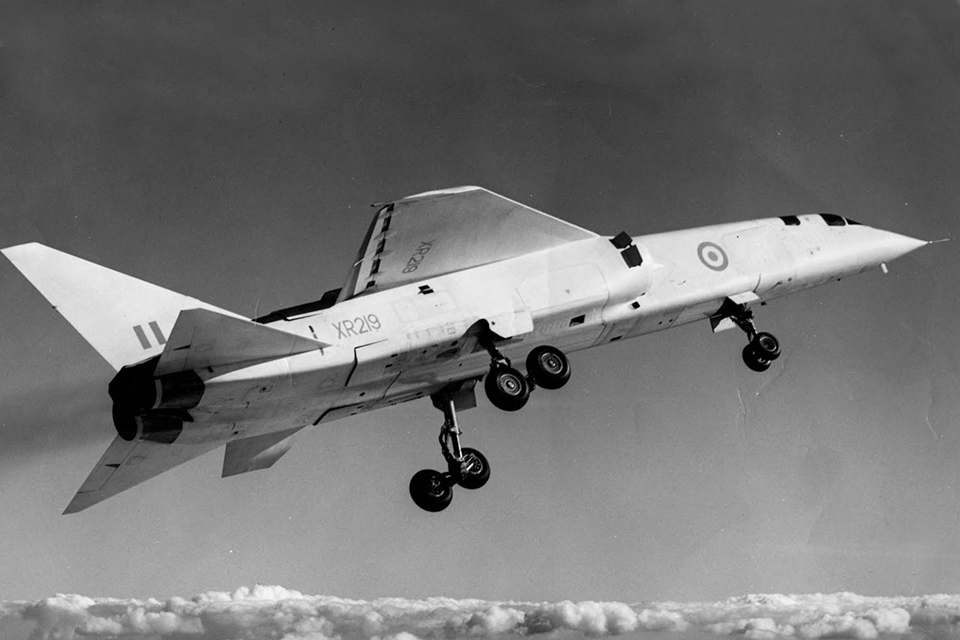
This sorry tale begins in the mid-1950s, when the British Ministry of Supply called for an aircraft to replace the English Electric Canberra. It was to have a speed of Mach 1.5, a 2,000-mile ferry range and be capable of bombing, close air support and recon—and was also supposed to offer VSTOL capability. The RAF piled on further requirements, upping the bombload to 6,000 pounds. And there were other complicating factors. Minister of Defense Duncan Sandys announced that the manned aircraft was obsolete, while his organization began forcing the consolidation of English aircraft manufacturing firms into larger and larger entities. The first of these companies, selected specifically to manufacture what would become the TSR.2, was British Aircraft Corporation, Ltd. BAC was formed by grouping the aircraft and missiles interests of Bristol, English Electric and Vickers, firms that had not only never contemplated a merger but were uncomfortable with just cooperating.
Vickers and English Electric became responsible for about 80 percent of the ever-changing new panacea plane, with Bristol supplying the Bristol-Siddeley (another merger) Olympus engine. As a measure of the sorry level of cooperation that ensued from this shotgun wedding, the first engines that were delivered did not fit inside the fuselage.
The British government, not content with mucking about with the design requirements, actually got into the procurement process, doing such fundamental things as defining the cockpit layout. As a result, some subcontractors found themselves working on a single project for the new BAC and for the government at the same time. The confusion inherent in the multiple bureaucracies was staggering.
Against all odds, from this unseemly welter of confusion emerged a magnificent aircraft, the elegant, hot performing BAC TSR.2. (Initially the TSR acronym stood for tactical support and reconnaissance, with the 2 standing for Mach 2. When the nuclear role was considered for the aircraft, its name was changed to tactical strike and reconnaissance).
Despite all the difficulties and the fact that the Olympus engines in the prototype were limited to 97 percent power and had (it was hoped) a five-hour life expectancy, the heroic Ronald Beamont made the first flight on September 29, 1964. The aircraft was incomplete, and government wolves were already circling, intent on closing down the program.
The testing process was slow and problematic. The engines didn’t perform to specs, and there were problems with the undercarriage. But the aircraft’s potential was already evident. On the 14th test flight Beamont achieved Mach 1 without using his afterburners—today they call it “supercruise.” On the same flight he engaged just one of the two afterburners and accelerated to Mach 1.2. According to pilot reports, the TSR.2 was delightful to fly. The electronics were supposed to have included terrain-following, forward-looking infrared and other advanced equipment, but these were never fitted.
In another brilliant flash, the British government decided that the General Dynamics F-111 would be a less expensive purchase and canceled the TSR.2 program, going through the ritual of having the unfinished aircraft dismantled and the jigs destroyed. Two badly gutted prototypes were allowed to survive, one of which can be seen at the splendid Royal Air Force Museum at Cosford.
Protracted delivery schedules and skyrocketing costs killed the F-111 idea, and the RAF was instead provided with McDonnell Douglas Phantom IIs and Blackburn Buccaneers transferred from the Royal Navy. The whole TSR.2 fiasco was, as the Brits say, a bit of a cock-up on the aircraft procurement front, and a sad loss to aviation.
Martin XP6M SeaMaster
Much that was good in the Martin XB-51 found its way into the Martin XP6M SeaMaster, a massive four-jet flying boat that was ultimately denied production when a totally new weapon system, the submarine-launched ballistic missile, suddenly required a total commitment of U.S. Navy funds.
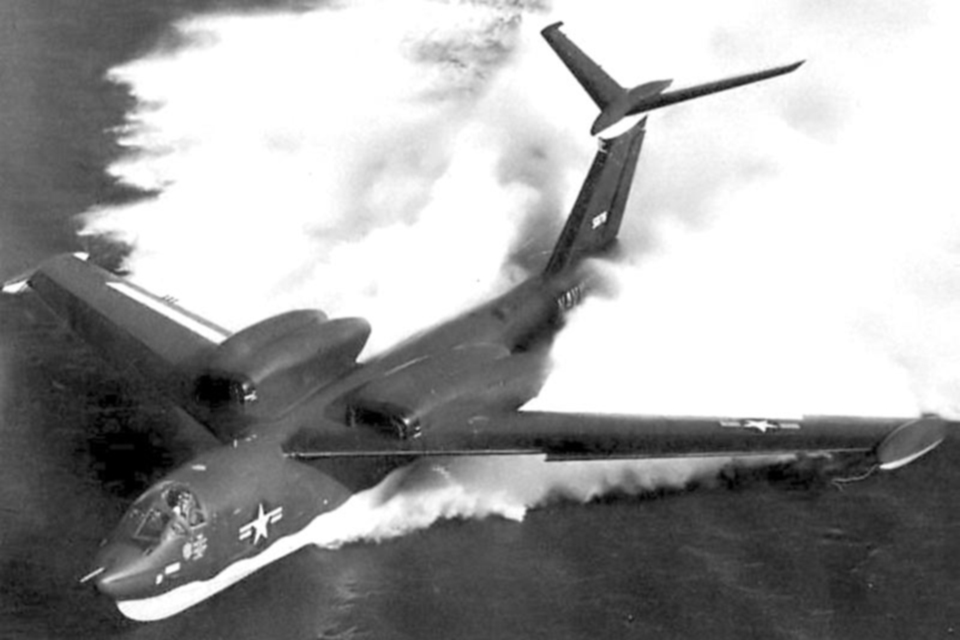
The SeaMaster was a product of the Navy’s desperate need to gain a share of the nuclear weapon monopoly then held by the infant U.S. Air Force. Smarting from the cancellation of the giant USS United States super aircraft carrier, the Navy Bureau of Aeronautics developed the concept of the seaplane striking force (SSF)—a relatively small number of fast, long-range jet flying boats that would carry nuclear weapons but could also be used for mine-laying, conventional bombing and reconnaissance. The concept was considerably ahead of contemporary nuclear weapons, which were still relatively large. But senior admirals knew that nuclear weapons would be reduced in size in the near future, and counted on the SeaMaster to fill the nuclear bomber role for the Navy.
The Navy intended to use the SeaMaster in small numbers, operating from open-water bases where the aircraft would be nurtured by specially outfitted ships, and refueled at sea on long-range missions by submarines or other naval vessels. The Soviet Union could access the open oceans only through a few relatively narrow passages, and the Navy believed that it could seal those passages off with mines delivered by the SeaMaster.
A design competition between Martin and Convair began in April 1951, with Martin emerging the winner. The Navy awarded a huge contract calling for two prototype XP6M-1s, six preproduction YP6M-1s and up to 24 production P6M-2s. The jet flying boat was intended to carry no less than 30,000 pounds of bombs over a range of 1,500 miles, with a Mach .9 dash capability at low altitudes. That was a phenomenal speed, more than 50 percent faster than the Boeing B-52 at low altitude. It required the same strong airframe necessary for open-sea operation.
Four Allison J71s were mounted in the prototypes, with Pratt & Whitney J75s intended for the production version. Martin’s decades-long experience in hull design resulted in a beautiful, rugged fuselage, and the 102-foot wings had a slight anhedral and featured fixed tip floats that stabilized the plane on the water. Developments of the XB-51’s rotating bomb bay, T-tail and spoiler ailerons were incorporated in the design.
The July 14, 1955, first flight went off well, with the only obvious problem being that in afterburner the engines scorched the rear fuselage and fatigued it sonically. Test flying went well until December 7, when the first SeaMaster crashed into Chesapeake Bay, killing all on board. The program had another serious blow on November 9, when the second prototype went into an uncontrollable outside loop. Fortunately, the crew managed to eject safely.
The Navy persisted with the program, which ultimately cost $400 million. The six YP6M-1s were built and tested successfully, equipped with engines that were canted outward to avoid the scorching and sonic fatigue problems. The number of production aircraft was reduced to eight. The P6M-2s were just finishing their operational evaluation when the Navy found a new weapon with a tremendous requirement for funds: the Polaris submarine. Chief of Naval Operations Admiral Arleigh “Thirty-One Knot” Burke canceled the SeaMaster and many other programs to fund the Polaris. Sadly, the SeaMasters were scrapped—as was much of the aircraft design capability of the time-honored Martin company.
Tune in next issue for contributing editor Walter J. Boyne’s companion piece, “Unfettered Turkeys,” which examines seven of the worst aircraft that ever made it into production. For further reading, he recommends his book The Best of Wings; Martin Aircraft 1909-1960, by John Breihan, Stan Piet and Roger Mason; and Fall of an Arrow, by Murray Peden.

